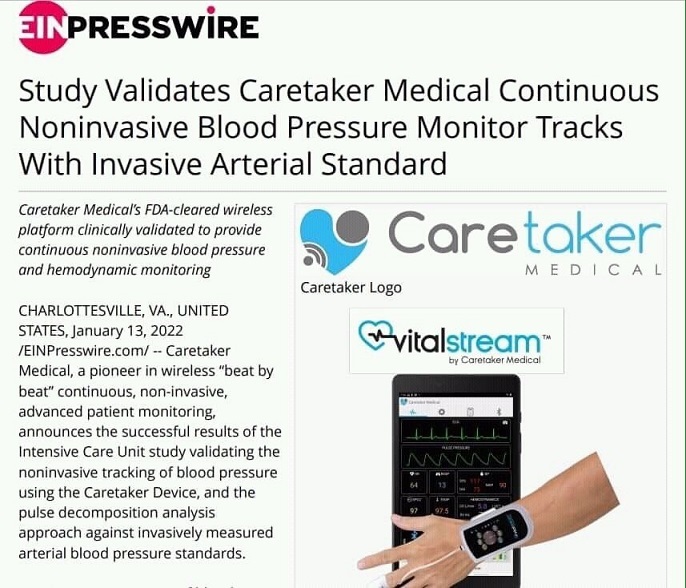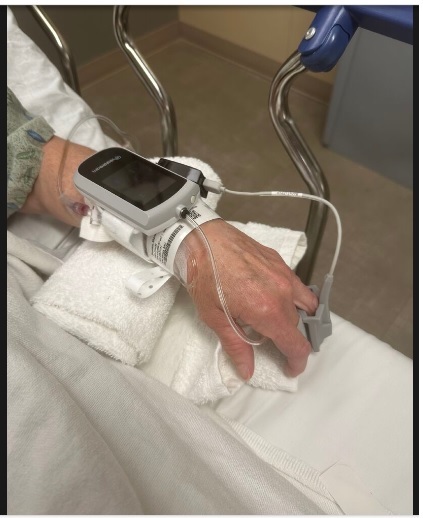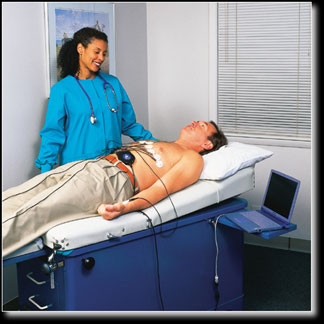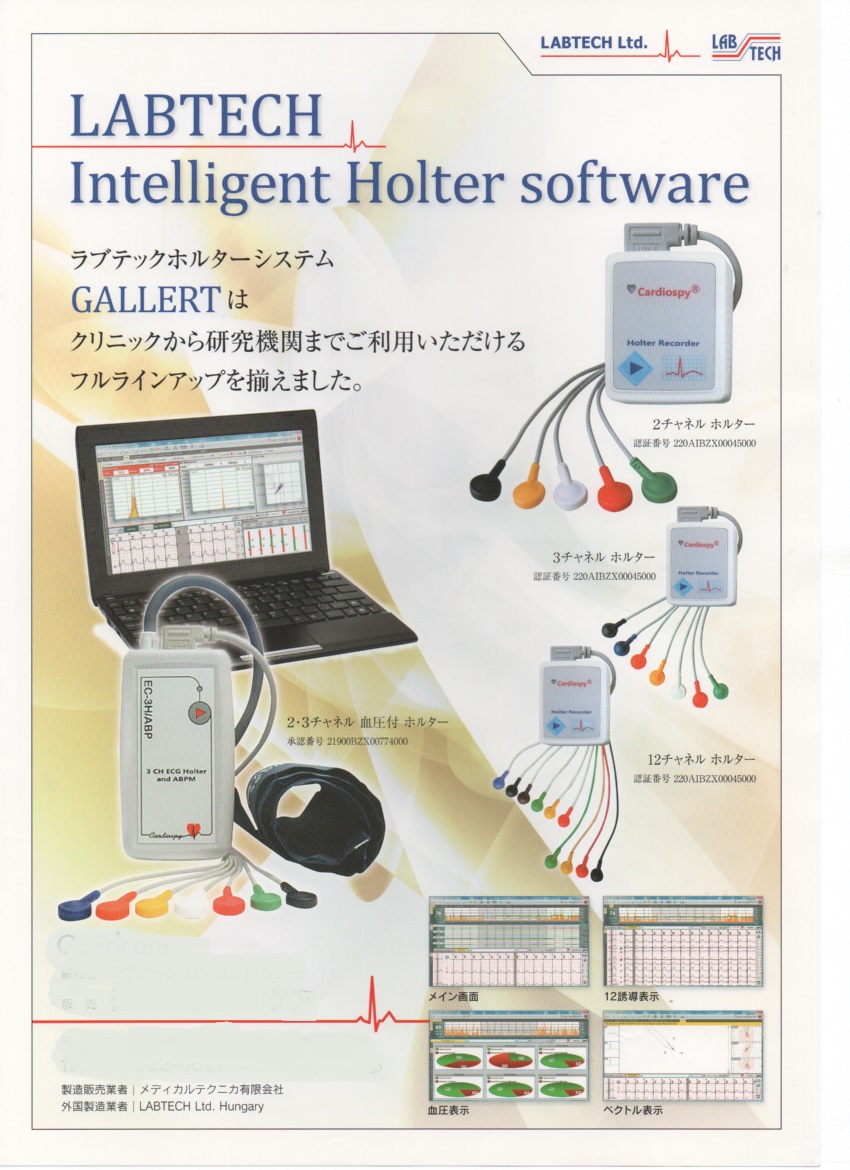|
||||||||||||
|
||||||||||||
ご採用のお客様へ 恐れ入りますが、インストールの際には、Setup.exe を右クリックして、Administrator でインストールを開始願います。 |
||||||||||||
医学ご研究のテーマを提言 米国 #Caretaker Medical社(旧 #ETC社が増資及び薬事・販売体制整備し改名)が開発製造販売した ワイヤレス #非観血血圧計は、 リアルタイムな血圧情報をご案内します。 それは、#世界初原理で、波形と数値及び波形解析数値及び最先端ディジタル技術搭載しました。 下記のような医学のテーマを非観血方法でご提供します。 また、同時に、心拍のRR間隔の テキストファイル等が出力されています。 また、MRI中のオンラインかつリアルタイム計測が可能です。 特に、心臓からの第一波を正確に抽出する方法は、#観血式血圧測定と同等な結果を 提供しています。 1、 人体の動きによる #血圧波形と値の変化、#自律神経変化 2、 定期的な測定、一定時間、一定期間毎の測定 3、 人体への負荷による血圧波形と値の変化、自律神経変化 4、 #血管の変化、#血流の変化、#心拍出量の変化に対する血圧の応答、 5、 #肝臓、#腎臓、3末梢などの病気の変化 6、 #薬効効果に対する血圧波形と値の変化、自律神経変化 7、#感情や心の動きによる血圧波形と値の変化、3自律神経変化 8、# MRI中、#fMRI中の計測 9、 #アルツファイマ―、#難病などの #兆候の発見の研究 10、 #遠隔診療法への適応 11、 #心カテ、#血管造影中の計測 12、 其の他新分野計測、 |
||||||||||||
| #非
観血血圧の #ケアテイカの血圧値は、#観血血圧に相当することが証明されました、#米国FDAに認可されました、 httpswww.ncbi.nlm.nih.govpmcarticlesPMC5361833 |
||||||||||||
 |
||||||||||||
MRI 中の #バイタルサイン監視に最適であることが判明しました |
||||||||||||
|
||||||||||||
#観血血圧波形と同じ波形を表示します。 #非臨床用、#研究用、#実験用、#スポーツ用、等に対して、デモ器をご用意しました。 ご要請をお待ちしております。 なお、メーカよりの指示で、当面、臨床用には、販売致しません。臨床用のモデルが製造され次第、薬事申請致します。 |
||||||||||||
 細い透明なプラスティックチューブを、厚い扉の角から中へ、臨時に通しています |
||||||||||||
|
||||||||||||
基本的原理 1、 当ソフトウエアは、指の動脈波形を分析します 2、 この波形は、三つの異なった波形の合成です。 3、 その第一の波形(P1)が、心臓から送られてくる駆出波です。 4、 その第二の波形(P2)が、胸部大動脈と腹部大動脈の繋ぎ部からの反射波です。 5、 その第三の波形(P3)が、腹部大動脈と脚部動脈との繋ぎ部からの反射波です。 6、 当ソフトウエアは、この三つの振幅と時間差を解析して、血圧波とそれらの値と、 血管パラメータを表示します。 |
||||||||||||
|
|
||||||||||||
#無線連続非観血血圧計が提示する機能と今後の応用の期待 1、一拍毎の、#リアルタイムの血圧波・血圧値を表示します 2、#出血度合いを測定し、表示できるように思われます 3、#心拍数を心電図より、より正確に測定しています 4、#大動脈瘤の検出と位置を検診の際に診断できる能力があるように思われます 5、#心疾患を診断できるように思われます。各種 #心疾患診断との併用等 6、#夜行性高血圧症を検診、或いは #予後診断できるように思われます 7、#睡眠障害を検診、或いは #予後診断できるように思われます 8、#電話回線による常時監視に容易に応用できます 9、#呼吸パターン、#不整脈パターンを解析できるように思われます 10、#透析中、#集中治療中、#手術中、#カテ中、各種治療中、#救急車中、等の測定 11、#パソコン心電図、#パソコン超音波診断、#パソコン各種診断との同時使用等の測定 12、#MRI,CT,X線診断との併用の可能性 他に #新しい診断方法をご提供できるように思われます。 |
||||||||||||
| ご案内 詳しくは、お電話賜りましたら、メール添付等で、ご説明も含め、ご案内申し上げます、 048-928-0168 gelertduna at gmail.com |
||||||||||||
| #VitalStream の資料のご入手法 及び 当該米国会社の発展途上をご案内します、 弊社が #2007年から日本に導入して以来、現在は極めて多岐にわたる性能と可能性を有する製品になりました、 #2007年から、#Caretaker_type1,type2,type3,type4 と開発成長し、現在は #VitalStream_type1,type2,type3 となっております、 type1 は Caretaker tpye5が改名されました、type2 は現在開発中項目を含みます、type3 は最先端他社センサーを取り込んだ型式です、 |
||||||||||||
|
||||||||||||
| 歴史的新機能が検証されました、#非観血で、#観血相当血圧をモニターできます、 | ||||||||||||
|
httpswww.ncbi.nlm.nih.govpmcarticlesPMC5361833 BMC Anesthesiol. 2017; 17: 48. Published online 2017 Mar 21. doi: 10.1186/s12871-017-0337-z PMCID: PMC5361833 PMID: 28327093 Continuous Non-invasive finger cuff CareTaker® comparable to invasive intra-arterial pressure in patients undergoing major intra-abdominal surgery Irwin Gratz,1 Edward Deal,1 Francis Spitz,1 Martin Baruch,2 I. Elaine Allen,3 Julia E. Seaman,4 Erin Pukenas,1 and Smith Jean1 Author information Article notes Copyright and License information Disclaimer This article has been cited by other articles in PMC. Associated Data Data Availability Statement The datasets generated during and analysed for the current study are available from the corresponding author on reasonable request. Abstract Background Despite increased interest in non-invasive arterial pressure monitoring, the majority of commercially available technologies have failed to satisfy the limits established for the validation of automatic arterial pressure monitoring by the Association for the Advancement of Medical Instrumentation (AAMI). According to the ANSI/AAMI/ISO 81060–2:2013 standards, the group-average accuracy and precision are defined as acceptable if bias is not greater than 5 mmHg and standard deviation is not greater than 8 mmHg. In this study, these standards are used to evaluate the CareTaker® (CT) device, a device measuring continuous non-invasive blood pressure via a pulse contour algorithm called Pulse Decomposition Analysis. Methods A convenience sample of 24 patients scheduled for major abdominal surgery were consented to participate in this IRB approved pilot study. Each patient was monitored with a radial arterial catheter and CT using a finger cuff applied to the contralateral thumb. Hemodynamic variables were measured and analyzed from both devices for the first thirty minutes of the surgical procedure including the induction of anesthesia. The mean arterial pressure (MAP), systolic and diastolic blood pressures continuously collected from the arterial catheter and CT were compared. Pearson correlation coefficients were calculated between arterial catheter and CT blood pressure measurements, a Bland-Altman analysis, and polar and 4Q plots were created. Results The correlation of systolic, diastolic, and mean arterial pressures were 0.92, 0.86, 0.91, respectively (p < 0.0001 for all the comparisons). The Bland-Altman comparison yielded a bias (as measured by overall mean difference) of −0.57, −2.52, 1.01 mmHg for systolic, diastolic, and mean arterial pressures, respectively with a standard deviation of 7.34, 6.47, 5.33 mmHg for systolic, diastolic, and mean arterial pressures, respectively (p < 0.001 for all comparisons). The polar plot indicates little bias between the two methods (90%/95% CI at 31.5°/52°, respectively, overall bias = 1.5°) with only a small percentage of points outside these lines. The 4Q plot indicates good concordance and no bias between the methods. Conclusions In this study, blood pressure measured using the non-invasive CT device was shown to correlate well with the arterial catheter measurements. Larger studies are needed to confirm these results in more varied settings. Most patients exhibited very good agreement between methods. Results were well within the limits established for the validation of automatic arterial pressure monitoring by the AAMI. Keywords: Non-Invasive, CareTaker, Central blood pressure, Finger cuff, Intra-Arterial pressure |
||||||||||||
文献の新規作成に最適な方法をご提供できるとご提案します アナログ波形出力は、ディスクトップパソコンにDAボード追加必要となります。 |
||||||||||||
| 海外研究の例 夜間低血糖値症、夜尿、睡眠障害、等の監視 CareTaker is a new Monitoring Device for the Detection and Warning of Nocturnal Hypoglycemia, Nocturnal Dip, Sleep Disorders, and Adherence and Efficacy of Treatments. CareTaker is a comfortable physiological monitor that can be worn all night without disturbing sleep. It tracks blood pressure beat by beat, heart rate, heart rate variability, breathing rate, blood pressure variability, hand temperature, and other parameters. The device is the size of a bar of soap, fits in the palm of the hand, and records physiological parameters for ten hours. |
||||||||||||
海外研究の例 胸部大動脈圧受容反射 experienced RE practitioners are able to control the baroreceptors of the thoracic aorta in a unique fashion. The upshot is that RE practice may help keep the thoracic aorta elastic, an important aspect of maintaining central blood pressure and lasting cardiovascular health. |
||||||||||||
海外研究の例 #MRI下の血圧連続モニター #Continuous #Noninvasive #Blood_Pressure for Human #MRI Applications The NIBP-MRI is a wireless and noninvasive physiological monitoring system that tracks blood pressure, using #Pulse_Decomposition_Analysis (PDA) technology, as well as heart rate. NIBP-MRI operates passively at a low constant coupling pressure of 40 mmHg. After being provided a calibrated blood pressure reading, the device tracks blood pressure by analyzing the timing and amplitudes of the primary #left_ventricular_ejection_pulse as well as the #arterial_pulse_reflections, at the middle phalange of the middle finger, at the wrist, or upper arm. The system provides relative, real-time, beat-to-beat pressure measurement values during magnetic resonance imaging. |
||||||||||||
海外研究の例 Android でデータ収集 #CareTaker Persona: #blood_pressure, #heart_rate, and other vitals. #CareTaker_Personal Allows #Android to interact with #remote_device using a comfortable, #finger_cuff. Optional Bluetooth #glucometer, #oximeter, #bathroom_scale, and #thermometer can be slaved. Data automatically uploaded to a #server. |
||||||||||||
#ケアテイカのタイプが追加されます 初期のタイプ: #ケアテイカ_タイプ1、 #テレメディシンタイプ(左図): #ケアテイカ_タイプ2、 #スマートホンタイプ; #ケアテイカ_タイプ3 |
||||||||||||
|
||||||||||||
|
||||||||||||
 |
||||||||||||
|
||||||||||||
| #ディスクリート_ウエイブレット法による、 #基線安定、#ノイズ除去で、#P波自動検出により #心房細動を自動解析します、 |
||||||||||||
|
||||||||||||
|
Theory of the #P_wave_detection The algorithm first
finds the the possible positive and
negative wave peaks based on zero transition searching, then validates them
with comparing to reference P waves. The P wave detection
needs high amplitude resolution. This value is better, than 0.6 uV / bit in the
Cardiospy system. With this resolution
and the effective filter system which uses wavelet transformation, the Cardiospy
system is able to detect P waves less than 50 uV of amplitude. Validation of the #P_wave detector The validation is
carried out on 10 pcs 12 channel and 10 pcs 3 channel ECG reference records.
The reference records include the P wave
annotation. 12 of the 20 records
are taken from the MitBih database, 8 records are taken from the Labtech
database (30000 – 30007). 12 ch records s0014lre, s0292lre,
s0302lre, s0331lre, s0364lre, s0422_re, s0431_re, s0437_re, s0549_re, s0550_re 3 ch records mgh001, mgh007,
30000, 30001, 30002, 30003, 30004, 30005, 30006, 30007 Validation result: Sensitivity: 95.42% |
||||||||||||
|
||||||||||||
|






































